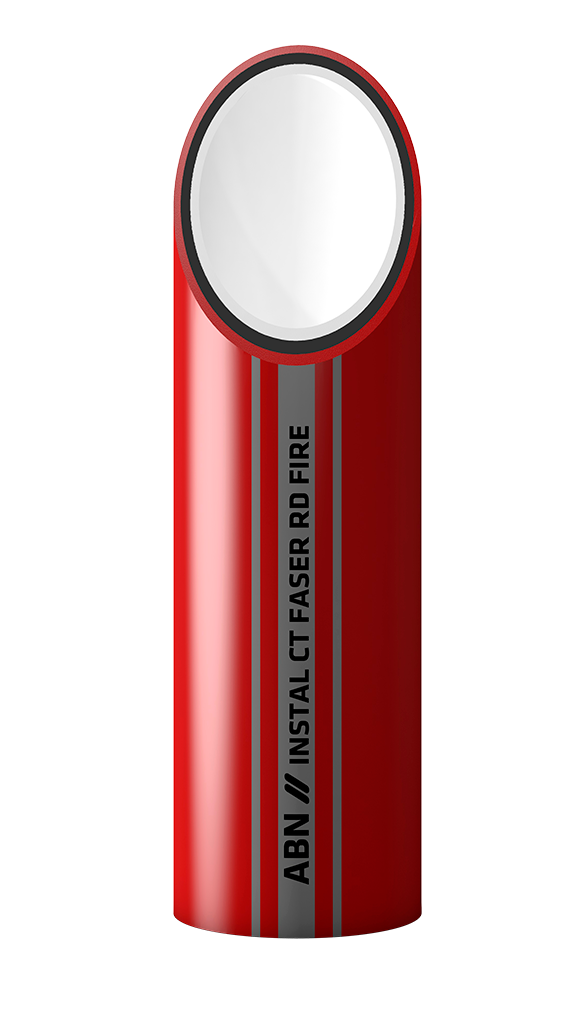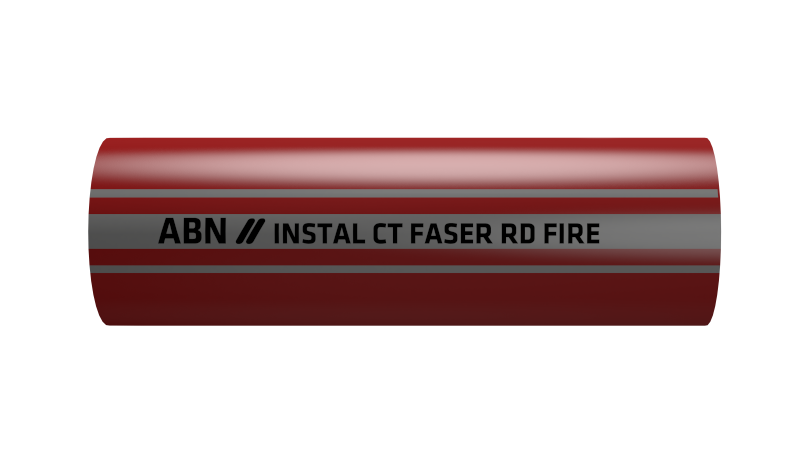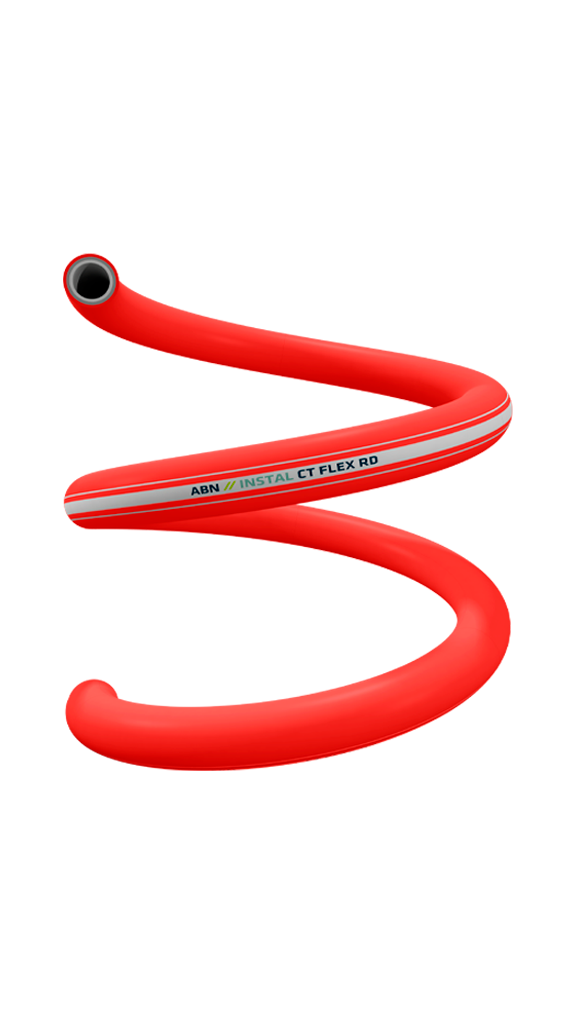In recent years, the use of plastic components for fire fighting piping has become increasingly important as an alternative to traditional metallic systems due to their high effectiveness.
In this space you can discover:
- We answer some questions about PPR fire fighting piping systems.
- The 7 advantages of using PPR in fire fighting systems
- Joining techniques
- Installation of automatic sprinklers in PPR pipes
- Certifications of polypropylene systems for fire fighting networks
- Contributing to sustainability through environmental certifications
We answer some questions about PPR fire fighting piping systems.
Piping, sprinklers and fire hydrants (BIEs) are the main elements of a fire fighting system, and it is vital to choose the most innovative and adaptable parts for each situation.
Until recently, the most common materials for fire protection networks were metallic options such as galvanised steel or stainless steel, but today we have new certified plastic systems that offer better solutions thanks to their technical particularities for fire protection networks, becoming a safe and reliable material as an alternative to steel in sprinkler systems (sprinkles) and BIEs.
Below, we clarify some of the doubts that still exist around the use of PPR pipes for fire fighting systems:

- PPR pipes do not melt in case of fire. PPR CT pipes are classified B, s1 – d0, according to the European standard en 13501, which guarantees that it is a non-combustible material, with very low smoke emission and no dripping.
- In addition, to ensure that they will withstand fire, these systems are double-checked for fire performance. On the one hand, they have reaction to fire tests for construction products and on the other hand, they have fire exposure tests, both accredited by AENOR.
- PPR pipes are an improved version of steel pipes. Corrosion in sprinkler systems at PCI is, on the one hand, 60% of the generalised type (oxidation), and 40% due to microbiological influence (MIC). Compared to steel, PPR pipes have a much lower roughness coefficient, which means that they do not corrode over time.
- PPR pipes are approved for installation in fire-fighting networks. PPR pipes are certified by AENOR and approved by RIPCI for the use of BIEs and sprinklers for the following risks:
- Sprinklers, in light risk (LR) and ordinary risk (OR) areas
- BIEs, in low risk (RB) and medium risk (MR) areas for standardised 25 and 45 mm hoses
- PPR pipes are economic. The handling of PPR pipes is made much simpler by using hot melt as the joining system, ensuring a quicker and cleaner installation. Therefore, in addition to the aforementioned advantages that make PPR pipes reduce maintenance costs, it also means a reduction in installation costs as it does not require auxiliary resources.
- Plastic pipes are recyclable. Contrary to many beliefs, PPR pipes are environmentally friendly and recyclable, making polypropylene a suitable material for sustainable construction.
- Low and high temperature wastewater disposal: Due to their temperature resistance, PP pipes are suitable for high and low temperature wastewater disposal in laboratories, laundries, kitchens, kitchens, autoclaves and industrial drains.
The 7 benefits of PPR systems in fire networks
This type of pipe guarantees advantages in situations where prevention is of little importance, such as in the event of fire, as well as having a service life of more than 50 years. Their installation is recommended, for example, in administrative and educational buildings, residential buildings, hospitals, public spaces with large numbers of people and car parks.
Here’s why you should use polypropylene pipes in fire fighting systems:
- Corrosion resistance. This material prevents the corrosion of the pipes inside them, reducing the obstructions that prevent sufficient water flow and, in addition, they do not require continuous maintenance.
- Lightweight. In contrast to metal pipes, PPR pipes have a much higher degree of lightness.
- Reduction of operating costs of the installation. The assembly of these pipes is carried out by thermofusion welding, which results in a reduction of assembly times and, consequently, installation costs are reduced.
- Homogenisation. When assembled, the pipe and fitting are fused together to form a much more uniform fit, avoiding any mechanical positioning thanks to the use of hot melt welding.
- Stability. Thanks to this homogenisation, a highly stable joint is achieved by fusing the seat to the outer surface and thickness of the pipe. This technique is used for the execution of cuttings, derivations and sprinkler connections.
- Versatility. They have the virtue of being able to adapt to the different situations to which they are subjected easily and quickly, being very tolerable in the face of change.
- Durability. These pipes have been designed, tested and certified to guarantee a useful life of more than 50 years, without requiring any type of subsequent maintenance.
For all these reasons, PPR pipes are positioned as an alternative to provide a solution to other problems caused by metallic sprinkler pipes, such as:
- Leaks from perforations
- Frequent system shutdowns
- Production losses
- Total system replacements
- Reduced design efficiency
For all these reasons, PPR pipes are positioned as an alternative to provide a solution to other problems caused by metallic sprinkler pipes, such as:


Joining techniques: types of welding for PPR pipes
Polypropylene pipes have low thermal conductivity and higher flexibility, resulting in lower installation stresses. In the case of welding, polypropylene pipes can be welded in three ways:
- Socket welding, which consists of heating the outer surface of the pipe and the inner surface of the fitting until the material melts, and then fitting the pipe into the fitting while the material is hot. This technique is used for joining polypropylene pipe systems with diameters from 20 to 160 mm.
- Electrofusion welding, which is based on fittings to which a copper spiral is incorporated in the manufacturing process. By means of connectors, a voltage of between 8 and 48 volts is introduced so that, by means of the joule effect, it heats up and transfers this heat to the tube that we have previously inserted, to form the union between the tube and the accessory. This technique can be used for joining pipes with diameters from 20 to 160 mm.
- ABN//WELDING ELECPIPE welding is a new joining system, different from the traditional one, with electrofusion incorporated in the pipe, which allows the pre-assembly of the installations before the joining takes place, as the copper loop is incorporated in the pipe. The ABN//WELDING ELECPIPE technology also has the advantage of being a fast method that does not require auxiliary means to make the joint, with the consequent reduction in costs, as the clamps ensure pre-assembly before welding, providing a secure and durable joint.
Certifications of PPR pipes for application in fire-fighting networks
As a contribution to the safety of PPR pipes, there are certifications that endorse them as a quality product and verify that they comply with the required standards. For an installation to be fully guaranteed against fire, we must prioritise those materials that are certified by official certifiers.
Below, we present the different certifications for PPR pipes that accredit them to be installed in fire-fighting systems:
- FM APPROVAL is a prestigious certification with international recognition that endorses products according to the highest technical and quality standards, allowing immediate identification of whether a product or industrial service complies with the required standards.
- The AENOR Certificate of Conformity for polypropylene and fibreglass piping systems for sprinklers and BIES guarantees maximum quality, performance and efficiency in fire protection piping. The guarantees offered by AENOR are some of the most prestigious in existence and having its backing means an internationally recognised mark of quality.

Environmental certifications of PPR pipes
Ecology is the only way to reverse the negative effects of environmental change, and it is the task of all companies and suppliers, as well as customers, to prioritise those materials and corporations that guarantee the most sustainable production possible. The new green economy is about choosing ecofriendly components that allow Europe to decarbonise by 2030, while avoiding negative impacts on the environment.
PPR pipes are environmentally friendly and recyclable. Polypropylene makes it easy to recover at a qualitative level for reuse in production. This process does not require energy and chemical resources, but simply a mechanical procedure. Polypropylene pipes are a clear example of the application of the three R’s to the production process, as they can be recycled mechanically by pelletising, becoming a new raw material, boosting the circular economy as this, in turn, can be used to manufacture other products, thus giving the material a new useful life.
Here are the different environmental certifications for PPR pipes:
- The Cradle to Cradle standard is also globally recognised and drives the sustainability and safety of innovation products for the circular economy. In this way, it assesses the design and manufacturing aspects of products and materials to verify that they have a positive impact on our environment. In this case, it is also relevant to take this seal into account if we want to receive a sustainable construction certificate such as LEED, WELL or BREEAM, awarding points for these certifications.
- The Environmental Product Declaration (EPD) provides a reliable, relevant, transparent, comparable and verifiable environmental profile of a product, enabling environmentally friendly products to be highlighted. This report is based on life cycle assessment (LCA) of the product according to international standards and quantified environmental data. It is elaborated according to category rules that ensure consistent criteria for each product.
For all these reasons, polypropylene is positioned as the best choice for fire-fighting systems, among other advantages, because it prevents obstruction of the interior due to the dragging of oxidised substances and, on the other hand, a correct flow is achieved as there are no obstructions due to rust, guaranteeing optimum operation. Moreover, as a reusable material, it contributes to sustainable development through the circular economy.


